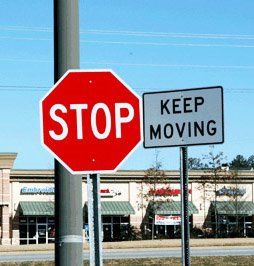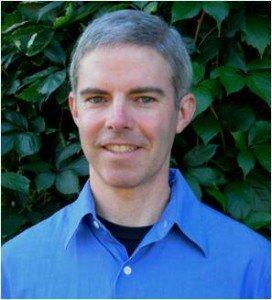Moronic Oxymorons in the Age of Climate Change
by Rob Dietz
At 400 parts per million, the concentration of carbon dioxide in the atmosphere has reached a menacing milestone. We’ve failed to get a handle on our addiction to fossil fuel, and now we’re in desperate need of solutions for preventing runaway climate change. There is no magic pill for curing the climate threat — real solutions involve the difficult work of changing the way we run the economy. It’s time to make a transition to a renewable-energy economy that respects the waste-absorption capabilities of the atmosphere.
As logical and desirable as this transition sounds to some, faux solutions seem to be more popular. Many people find it easier to accept ideas in line with the our growth-obsessed, technophilic economy rather than face the fact that the conventional economic approach has become obsolete. Two of the faux solutions would be laughable as oxymorons if they weren’t able to attract such serious support.
The phrase “clean coal” implies that miners have struck it rich — that they’ve found a seam of coal that, when burned, produces only a lemony fresh, green vapor. Wouldn’t “clean coal” make an excellent air freshener? “Clean coal” could be useful for all sorts of things in a pinch:
Mom: “Oh no! The baby just spit up on herself, and we’re all out of soap.”
Dad: “Don’t worry, honey, we’ve got some clean coal right here.”
“Clean coal” is just plain coal. It’s true that some varieties of coal produce less noxious emissions (e.g., less sulfur or mercury) than others, but none of them are clean. “Clean coal” is an abbreviation of the less poetic “clean coal technology,” a phrase that’s been around since the 1980s. A U.S. Department of Energy report from that decade explains that clean coal technologies are “systems that can offer significant benefits when used to generate power, control pollution, or to convert coal into other alternative energy products.” The report also offers this honest assessment:
There is no point in pretending that coal is what it is not, nor that it is not what it is. Coal is naturally endowed with the elements and minerals of the living organisms that define its primordial origins, and that means the carbon for which it is valued. But, to some degree, it also means sulfur, and nitrogen, and incombustible impurities. It is an incontrovertible fact that the uncontrolled burning of coal will release into the environment carbon dioxide (CO2), sulfur dioxide (SO2), oxides of nitrogen (NOx), particulate matter, and ash.
It is the business of the Clean Coal Technology Program to develop the means of burning this coal with attendant minimal emissions of these undesirable pollutants; we know that there can never be none. So, if not literally “clean” coal, then certainly we mean “cleaner” coal, and it is in this sense that the Program uses the shorthand term, Clean Coal Technology.
But that honesty is lost in the advertising and lobbying that mining and power generation corporations have funded to promote “clean coal.” As the prominent linguist and cognitive scientist George Lakeoff has noted, the imagery of “clean coal” can seep into the subconscious mind and affect attitudes toward coal.

At 400 parts per million, the time for oxymorons has passed.
Even more seductive than “clean coal” is the wishful thinking of “sustainable growth.” Economic growth has become the highest priority for almost every nation on Earth. Politicians compete with one another to see who can promise the fastest growth. Newscasters report rising economic indicators with glee. Economists in both government and academia promote an agenda of endless growth. But the continuous ramping up of production and consumption comes with severe costs — 400 parts per million of carbon dioxide in the atmosphere (and the associated climate destabilization) is but one among many. Take, for instance, the spate of species extinctions. Or the billions of people living in poverty. Or any number of other global-scale environmental and social problems. Even the most dedicated worshippers at the altar of growth recognize some of these problems. That’s why adjectives seem to be sprouting like mushrooms in front of “growth.” People regularly utter the phrase “sustainable growth,” along with its slightly less oxymoronic cousins, “green growth” and “smart growth.” But just as “clean coal” is really just coal, “sustainable growth” is really just growth.
No doubt that green technologies can help. A household with compact fluorescent light bulbs, or even LED bulbs, consumes less electricity and generates a smaller footprint. But if the number of houses continuously increases, even though they have smaller footprints, they combine into a larger overall footprint. David Owen explores this “rebound effect” in his recent book, The Conundrum. Technology and greater efficiency are not enough on their own. We can’t consume our way to sustainability — we have to shift our aim from an ever bigger economy to a right-sized economy. As Albert Bartlett, the physicist and activist, has said:
Smart growth destroys the environment. Dumb growth destroys the environment. The only difference is that smart growth does it with good taste. It’s like booking passage on the Titanic. Whether you go first-class or steerage, the result is the same.
It’s tempting to accept the clever slogans and magical “solutions” that bombard us all the time. After all, it sounds like “clean coal” is just the resource to power “sustainable growth.” You can have your cake and eat it too! But at 400 parts per million, the time for self deception and denial has passed. So has the time for buying moronic oxymorons.
 Rob Dietz brings a fresh perspective to the discussion of economics and environmental sustainability. His diverse background in economics, environmental science and engineering, and conservation biology (plus his work in the public, private, and nonprofit sectors) has given him an unusual ability to connect the dots when it comes to the topic of sustainability. Rob is the author, with Dan O’Neill, of Enough Is Enough: Building a Sustainable Economy in a World of Finite Resources.
Rob Dietz brings a fresh perspective to the discussion of economics and environmental sustainability. His diverse background in economics, environmental science and engineering, and conservation biology (plus his work in the public, private, and nonprofit sectors) has given him an unusual ability to connect the dots when it comes to the topic of sustainability. Rob is the author, with Dan O’Neill, of Enough Is Enough: Building a Sustainable Economy in a World of Finite Resources.






Leave a Reply
Want to join the discussion?Feel free to contribute!
(No profanity, lewdness, or libel.)